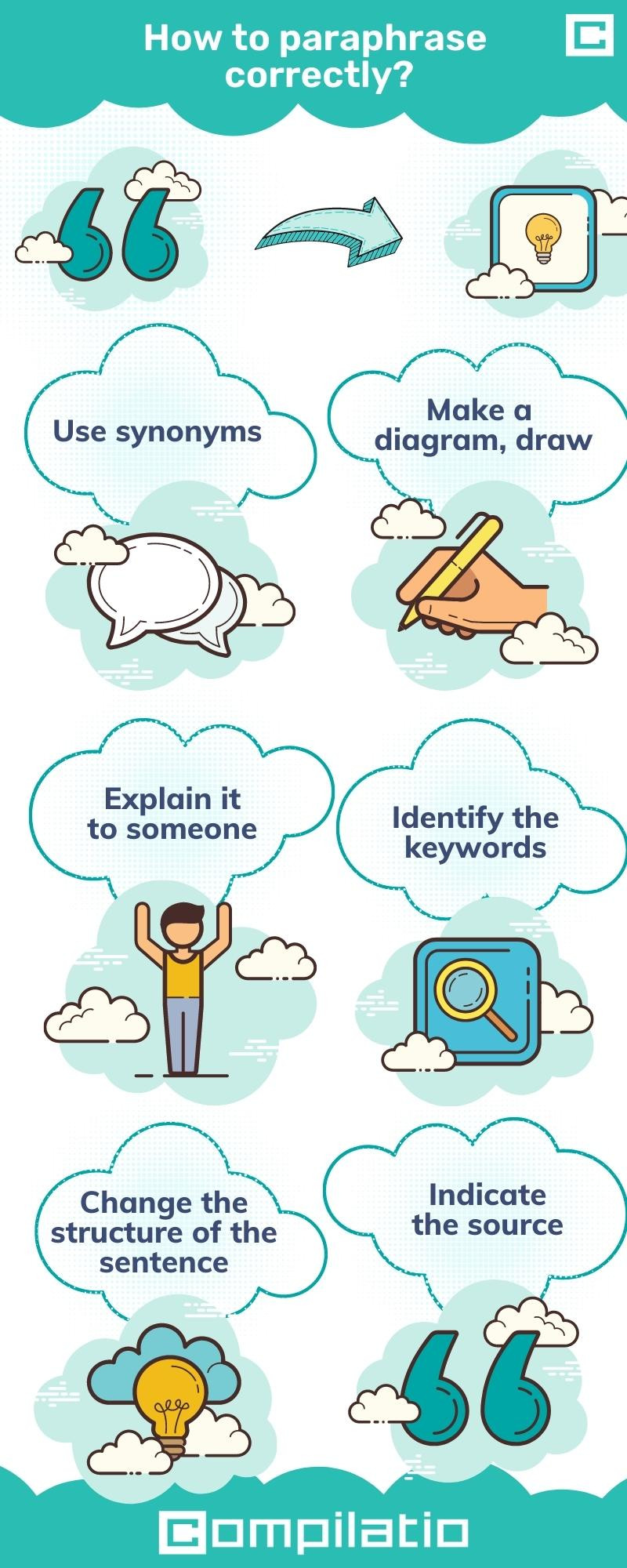Franck is a bachelor this year, he thinks that if he changes a few words in a citation, he doesn't need to quote the author.
Writing an academic paper encourages the mixing of personal and public ideas. The challenge for the reader is to be able to easily distinguish both to besure that plagiarism is avoided. So how do you use the ideas of authors while respecting intellectual property?
Summary:
- What is the definition of paraphrase?
- What is the benefit of rephrasing?
- How to paraphrase correctly?
- How to avoid plagiarism by using paraphrase?
- How do you paraphrase a passage whose author is anonymous?
- Should the inventor of common knowledge be mentioned?
- What are the alternatives to rephrasing a quotation?
- Does anti-plagiarism software detect paraphrase?










